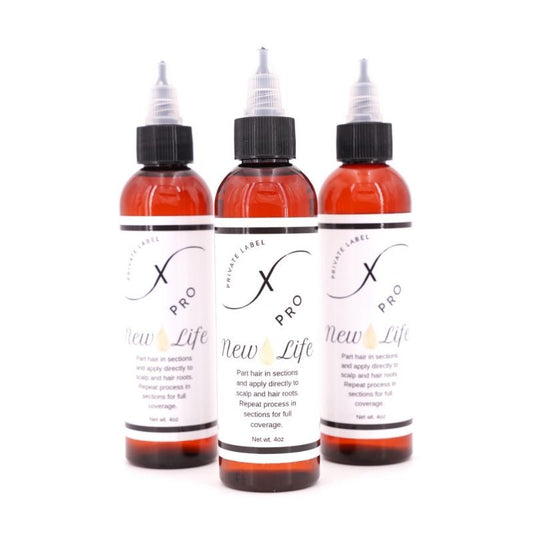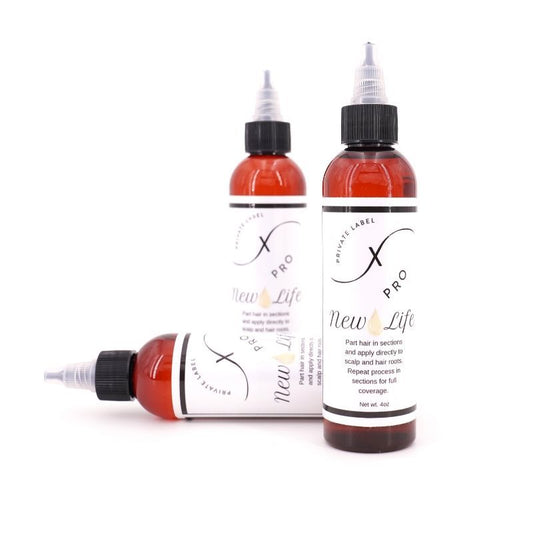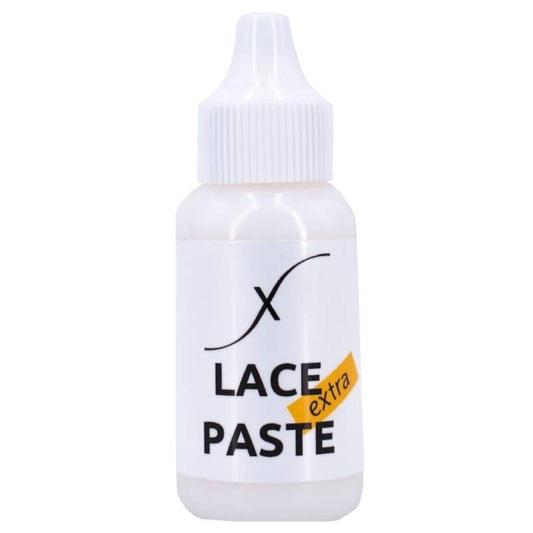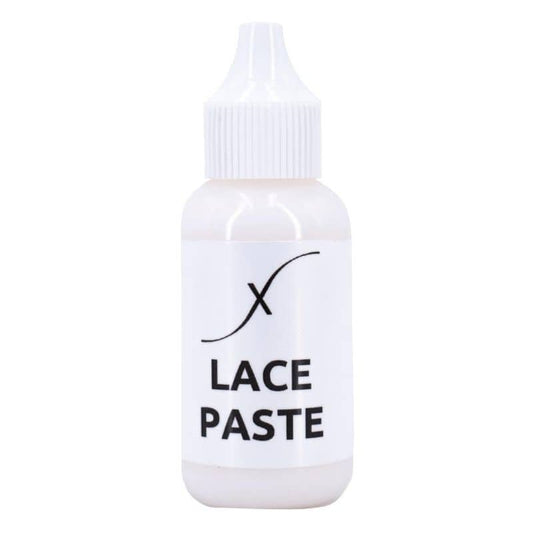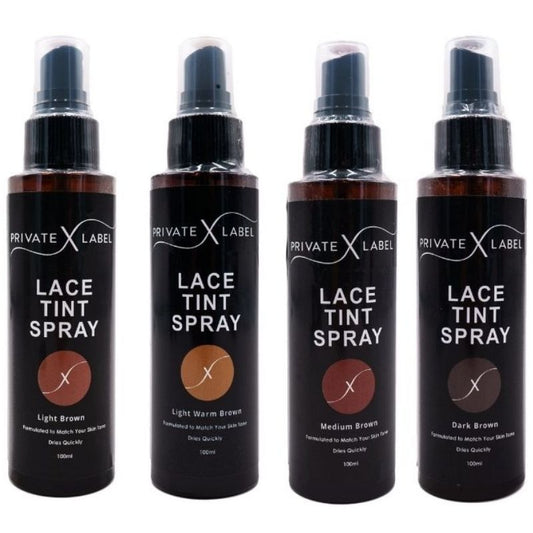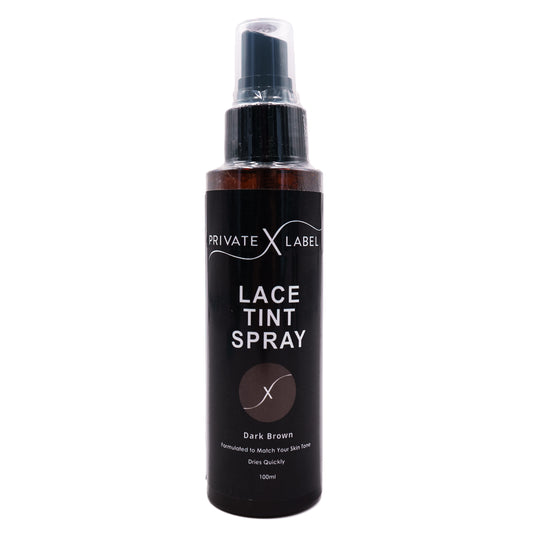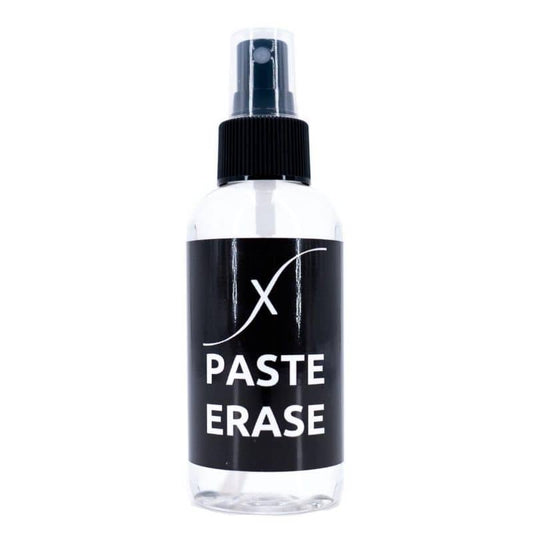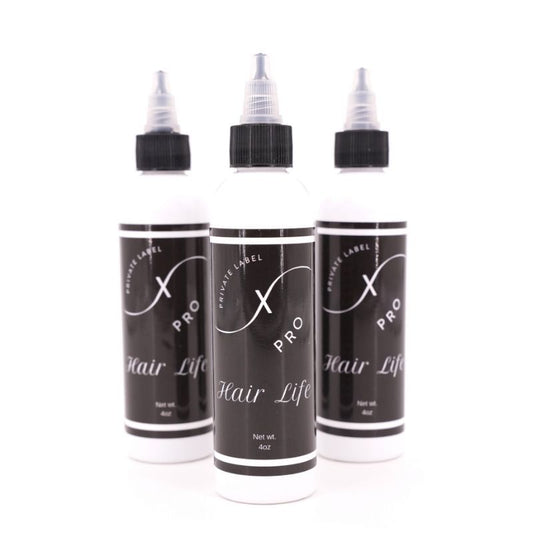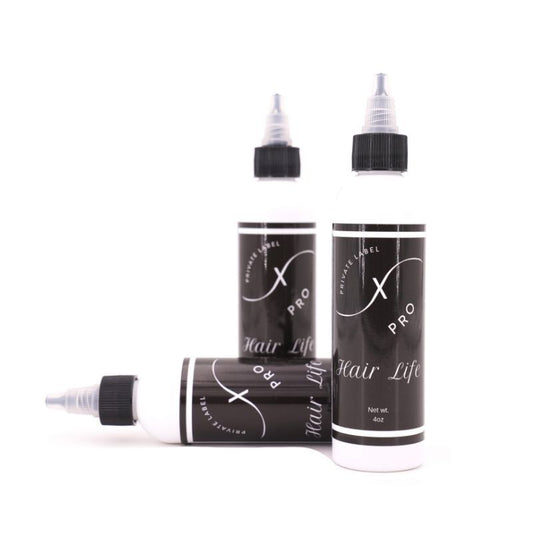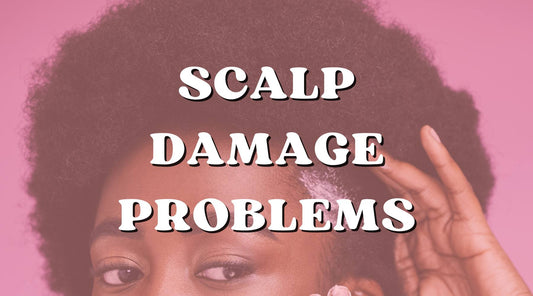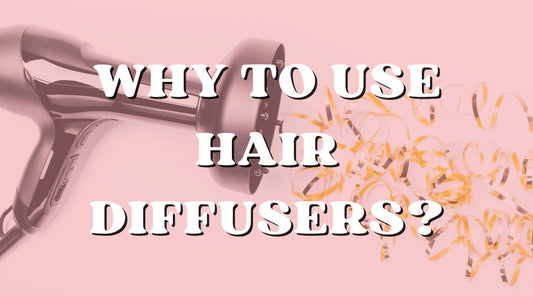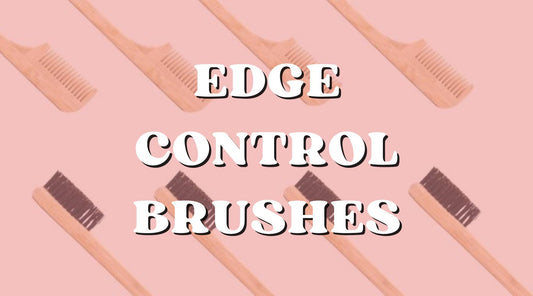1260 Memorial Drive
Atlanta, Georgia 30316
404-458-1330
Is It Too Late to Improve Your Hair Elasticity?
Mikey MoranHair elasticity is a term that describes how well your hair can handle stretching without snapping.
If you notice that you have little, broken hair on your shoulders and unwanted hair on the sink after styling, then you likely have an issue with your hair's level of elasticity.
Your hair's elasticity is just as natural as the color of your skin. 👌🏿
Your hair's flexibility was determined before you were born, but it can be affected by your daily styling routine and the use of heat and chemicals on your hair.
Styling choices such as chemical treatments, heat styling, and damage due to using the wrong hair tools all play a role in how your hair can sustain itself under pressure.
If you think that you have an issue with the elasticity of your hair or hair bundles, the last thing you want to do is make bad decisions with your hairstyling routine.

How Can I Determine My Hair's Elasticity?
You can't change your genes, but the good news is you can improve the elasticity of your hair.
Healthy hair elasticity is a balance of protein and moisture that keeps the hair stiff.
A great way to determine the level of your hair elasticity is by doing this simple test on dry hair:
Step 1:
Part your hair into four even sections.
Step 2:
Designate one small piece of hair from each section.
Step 3:
One curl at a time, pull each curl by the ends of your hair until it's completely straight.
Step 4:
If your hair did not break off, then let your hair go and watch as the curl reverts back.

Low Elasticity
When you pull your hair straight and notice that it is difficult to stretch or stay straight for too long, then you have low elasticity.
Low elasticity means that your hair lacks a balance of protein and moisture within your strands. Low elasticity could be hereditary or caused by damage to your hair.
If you notice that your elasticity is only weak in specific areas of your hair, then it's likely due to some damage, such as heat or chemical damage.
Medium Elasticity
To determine if your hair has medium elasticity, follow the four test steps by pulling a single strand and then letting go.
If you notice that your hair begins to revert at an average rate, then your hair has medium elasticity.
Having medium elasticity means that your hair has an average balance of moisture and protein.
Most likely, it has not suffered from any heat or chemical balance or perhaps very little damage.
It's important to check the elasticity of your hair often to make sure it doesn't decrease in its elasticity.
High Elasticity
If you have high elasticity hair, then that means that your hair can stretch over 50% of its resting length.
Then quickly bounces back after stretching.
Having high-elasticity hair is ideal because it indicates that your hair is in a healthy state and has an optimal balance of protein and moisture.
Raw Indian Hair can provide the high elasticity you desire.

How Can I Improve My Hair's Elasticity?
If you find yourself in the category of having low and medium elasticity in your hair, there are ways to improve upon it.
Having low or medium-elasticity hair is not a death sentence for hair health.
Lower levels of elasticity mean that you need to incorporate more strengthening and flexibility elements into your hair care routine.
Deep Conditioning
Under the cuticle of your hair lies two layers.
The medulla is where the color of your hair is determined, and the cortex is the location of the bulk of your hair's weight.
When either of these two layers is damaged, the elasticity of your hair is directly affected.
Deep conditioners are one of the only products that are created to penetrate these layers with the moisture you need to balance your hair's elasticity.
The benefit of using a deep conditioner is that, over time, the product fortifies these layers of your hair and begins the repairing process.
The ingredients in a deep conditioner immediately replace the missing moisture in your hair while training your hair to retain moisture daily.
If your hair needs a moisture boost, restore it during your next wash with As I Am Hydration Elation Intensive Conditioner.
Protein Treatments
Protein treatments are products that penetrate the hair shaft and deposit the proteins they're missing.
Hair that has high elasticity has a healthy level of protein, but medium to low-elasticity hair often lacks the protein necessary to maintain its natural texture.
You can tell that your hair lacks protein because it feels brittle and breaks off easily despite how much moisturizing product you put into it.
A great product to try that will balance out your hair's protein is SheaMoisture Manuka Honey & Yogurt Hydrate + Repair Protein Strong Treatment.
This protein contains strengthening ingredients like honey and yogurt that naturally revitalize hair that suffers damage from heat and chemical abuse.
It's crucial that you do not use a protein treatment too often, as it can cause your hair to become stiff.
Apply a protein treatment to your hair twice monthly.
Then, follow the protein treatment with a deep moisturizing conditioner to ensure that your hair remains balanced.
Leave-In Conditioners
Your cleansing and conditioning treatments might be on point.
But that doesn't mean that your hair is prepared to handle the stress of daily styling.
If your hair has the right balance of protein and moisture but still breaks during your style process, then you need to add a leave-in conditioner to your regimen.
Leave-in conditioners are created to be a lighter formula than a rinse-out conditioner.
Leave-in conditioners are made to work in conjunction with deep conditioners to help coat the hair shaft and protect it from potential styling and environmental damage.
An excellent leave-in conditioner to aid the survival of low elasticity hair is It's a 10 Miracle Leave-in Conditioner product.
This product has a strong reputation for working well on all hair types and protecting the hair while restoring moisture balance with elements like silk amino acids and panthenol, to name a few.
Since leave-in conditioners sit on top of the hair shaft, it's essential to use them as directed. Using too little product will result in it being ineffective.
Using too much leave-in conditioner will interfere with the body of your hair.
Take some time to experiment with this product to find the perfect amount that your hair can tolerate or experiment on these cute Burgundy Body Wave Bundles.

Reducing Direct Heat to Improve Hair Elasticity
Sometimes, there isn't a product on the market that can improve your hair condition.
Sometimes, we need to practice what we preach by being mindful of how we use heat on our hair.
If you've noticed a decline in your hair's elasticity, then you are suffering from heat damage. Careless and frequent use of heat is the fastest way to negatively impact the flexibility of your hair.
Consider what type of heat you're using on your hair, how you're using it, and how often you're using it.
Consider using indirect heat options such as a hooded dryer or air drying your hair to give it a break from going through the moisture-depleting process of drying under high heat.
If you must use a blow dryer, try using it on the low fan and cool temperature settings.
Your drying time will take longer, but you'll save your hair from further damage to your hair elasticity, which can take months or years to repair!

Avoid Chemical Treatments
You may have sworn off relaxing your hair, but that doesn't mean that you've left all potential chemical damage behind.
If you love to experiment with different color hair dyes, then you're exposing your hair to damaging chemicals that can do some significant damage to the elasticity of your hair.
Instead of putting your hair through the damaging process of bleaching, try wearing colored hair extensions.
If you want to add in a few fun highlights, then try out Private Label Extensions clip-in extensions that come in a variety of beautiful colors.
If you'd like to wear more permanent hair extensions, you can select from PLE extensions in a variety of lengths and textures. PLE extensions are 100% human hair extensions that can withstand multiple dye jobs.
If sew-in extensions aren't your jam, then check out PLE's line of lace front wigs. Lace front wigs are a semi-permanent hair styling solution that allows your hair to rest while you slay your style.
Don't let your hair suffer from chemical damage; check out the Private Label Extensions website for your protective hairstyling needs.
Protect Your Hair While You Sleep
Let's take it back to Haircare Lesson 101.
It doesn't matter if you have high, medium, or low elasticity hair.
You need to cover it at night. Sleeping directly on your pillow without securing your hair with a satin bonnet will only challenge your hair strength due to the friction of tossing and turning during the night.
If your hair is already suffering from elasticity issues, then sleeping directly on your hair will only increase your problems.
Hair that is suffering from damaged elasticity will continue to break and weaken over time as you sleep on it.
Make sure that you're covering your hair with a silk or satin bonnet or scarf every time you sleep.
Learn more with tips on how to save your hair from snapping off while you sleep.

Avoid Hair Tools
If you aim to improve your hair elasticity, then you need to eliminate the hair tools that are challenging it.
Take into consideration what kinds of hair tools you're using on your hair. Combs and brushes all add stress to our hair.
Those of us who are currently suffering from low elasticity can't afford to put our hair in a worse state.
If you're using combs and brushes to detangle your hair, experiment with detangling with only your fingers.
The goal of detangling your hair is to remove any knots and tangles that hinder you from running your fingers from root to tip while your hair is wet and drenched with conditioner.
The benefit of using your fingers to detangle your hair is that you can feel how much pressure you need to apply to remove the tangle without damaging your hair effectively.
A feat that's a little more difficult to achieve with a hair tool. You can also slick your hair down without using a harmful plastic brush.
Make sure that all your brushes are soft boar bristle brushes.
Boar bristles are gentle on the hair and promote your hair to produce their natural oils and grow. Using plastic bristles only pulls your hair out and causes further damage.
Take an evaluation of your hair tools and decide what's hurting you and what's improving your hair's current state of elasticity.

Products That Improve Hair Elasticity
If you're into DIYing your hair products or need to add a little something extra to your current products, here's a list of ingredients you should look for to help strengthen and improve the elasticity of your hair.
Honey
Honey is a great ingredient in your hair products because it strengthens your hair follicles and promotes healthy hair growth.
It also helps to reduce breakage by strengthening the hair.
If you're interested in adding honey to your hair care regimen, start by adding one teaspoon to your current shampoo or purchasing a hair product with honey in it.
Coconut Oil
Coconut oil is the perfect anomaly.
It's packed with protein and super moisturizing. However, too much of a good thing can be damaging.
If your hair is strong on protein, then using coconut oil too frequently will overwhelm the strand, causing protein buildup on the hair strand, which could break it off.
Coconut oils add shine and moisture to you while strengthening the strand to combat breakage.
If you're thinking of adding coconut oil to your haircare process, then start by using it as a deep conditioner.
After you shampoo your hair, melt some coconut oil between your hands by rubbing them together.
Then, coat your hair with the coconut oil and put a plastic cap over your head. Allow the coconut oil to sit on your hair for 45 minutes to an hour before rinsing.

Aloe Vera
It seems that aloe vera has an endless list of benefits to hair.
When it comes to improving your hair's elasticity, aloe vera is excellent for strengthening your hair and promoting hair growth.
In the article, she has a great suggestion:
Make your own aloe vera-based deep conditioner that works great on your natural hair as well.
There are also several products sold in stores that have the benefits of aloe vera.
Try Paul Mitchell's The Original line to add some aloe vera to your weekly regimen.
Shea Butter
We all know that shea butter is great for our skin, but it's just as good for our hair.
Shea butter helps to create a healthy environment for hair growth. If you've suffered a drastic change in your hair's elasticity, then try using shea butter on your hair.
You can start by rubbing small amounts of shea butter on your scalp and massaging it in.
If you're not interested in creating your hair products using shea butter, then try Cantu Shea Butter Leave-In Repair Cream.
This product is excellent for use as a leave-in treatment or a moisturizer with all the benefits of raw shea butter.

When in Doubt, Try It Out!
The road to improving your hair elasticity is not a short trip.
You have to be patient with yourself and with your hair journey. It will take a little time to reach your hair goals.
Test out new products and experiment with your hair styling process. 💇🏿♀️
Check out PLE's blog for more hair care tips to keep your hair strong and healthy. Or even for celebrity inspirations like SZA Real Hair and Wigs.
Leave a comment below and share your tips on improving your hair's elasticity.
And don't forget to like our Facebook Page Private Label Extensions.

